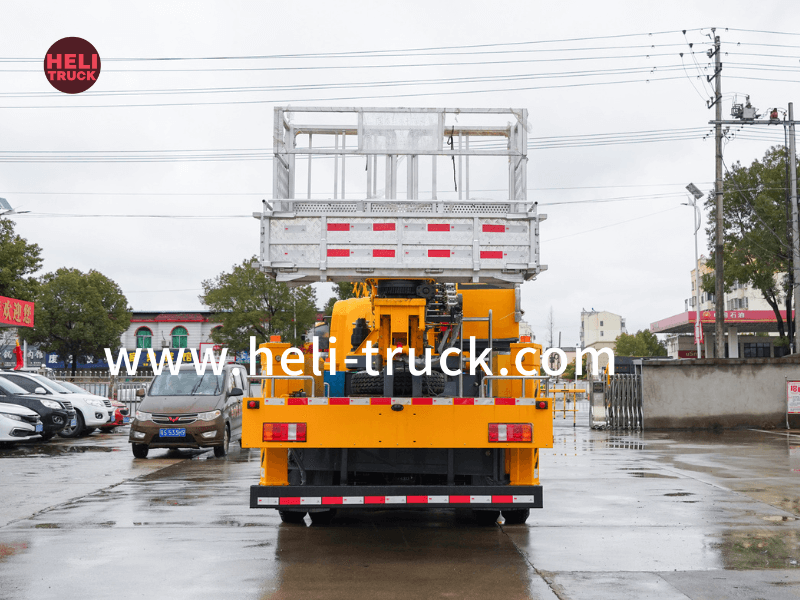Introduction
Waste management is a critical aspect of maintaining the cleanliness and sustainability of our cities and communities. Among the various tools and technologies used in waste management, garbage compactor trucks play a vital role in collecting and compacting waste efficiently. Over the years, advancements in technology have revolutionized garbage compactor trucks, making them more efficient, environmentally friendly, and cost-effective. In this article, we will explore the evolution of garbage compactor truck technology, from its early beginnings to the cutting-edge innovations of today.
Early Development of Garbage Compactor Trucks
The concept of garbage compactor trucks dates back to the early 20th century when cities faced the challenge of efficiently collecting and disposing of increasing amounts of waste. Early garbage trucks were simple in design, consisting of a flatbed truck with a crew manually loading waste into the back of the vehicle. These trucks had limited capacity and required frequent trips to disposal sites, leading to inefficiencies in the waste collection process.
The first significant innovation in garbage compactor truck technology came with the introduction of hydraulic compactors in the mid-20th century. Hydraulic compactors allowed waste to be compressed and compacted inside the truck, increasing its capacity and reducing the frequency of trips to disposal sites. This advancement significantly improved the efficiency of waste collection and disposal operations in urban areas.

Advancements in Compactor Technology
As technology continued to evolve, so did garbage compactor trucks. Modern compactor trucks are equipped with advanced hydraulic systems that enable them to compact waste more efficiently and effectively. These systems use powerful hydraulic cylinders to exert pressure on the waste, reducing its volume and maximizing the truck's carrying capacity.
In addition to hydraulic systems, modern garbage compactor trucks are equipped with advanced control systems that allow operators to adjust compaction settings, monitor waste levels, and optimize the compaction process. These control systems enhance the overall efficiency and performance of garbage compactor trucks, making them indispensable tools in waste management operations.
Furthermore, the development of automated compaction systems has revolutionized the waste collection process. Automated compaction systems use sensors and robotics to automatically compact waste as it is loaded into the truck, eliminating the need for manual intervention. This not only improves operational efficiency but also enhances worker safety by reducing the risk of injuries associated with manual handling of waste.
Environmental Considerations
In recent years, there has been a growing emphasis on environmental sustainability in waste management practices. aerial platform truck have evolved to meet these environmental considerations by incorporating features that reduce emissions and minimize environmental impact.
One of the key advancements in environmentally friendly garbage compactor truck technology is the integration of alternative fuel sources. Many modern compactor trucks are powered by clean energy sources such as compressed natural gas (CNG) or electric batteries, reducing greenhouse gas emissions and air pollution. These alternative fuel systems not only benefit the environment but also help operators reduce operating costs and comply with stringent emissions regulations.
Another environmental consideration in garbage compactor truck technology is the integration of waste separation and recycling systems. Some modern compactor trucks are equipped with onboard sorting mechanisms that separate recyclable materials from general waste, allowing for more efficient recycling processes. By promoting recycling and waste diversion, these trucks contribute to a more sustainable waste management ecosystem.
Future Trends and Innovations
Looking ahead, the future of garbage compactor truck technology is poised for further innovation and advancement. One of the emerging trends in the industry is the use of artificial intelligence (AI) and data analytics to optimize waste collection routes and schedules. By analyzing data on waste generation patterns, traffic conditions, and other factors, AI-powered compactor trucks can improve operational efficiency and reduce costs.
Additionally, the adoption of autonomous driving technology is expected to revolutionize the waste management industry. Autonomous garbage compactor trucks can operate without human intervention, enhancing safety and efficiency in waste collection operations. These vehicles can navigate urban environments, collect waste, and compact it with precision, all while minimizing the risk of accidents and errors.
Furthermore, advancements in material science and engineering are leading to the development of more durable and lightweight materials for garbage compactor truck construction. Lightweight materials reduce fuel consumption and increase payload capacity, improving the overall efficiency and sustainability of waste collection operations.
Conclusion
Garbage compactor trucks have come a long way since their early beginnings, evolving into sophisticated and efficient tools for waste management. The advancements in compactor truck technology have revolutionized the waste collection process, making it more efficient, environmentally friendly, and cost-effective. With the integration of advanced hydraulic systems, automated compaction technology, and environmental considerations such as alternative fuels and recycling systems, garbage compactor trucks are at the forefront of sustainable waste management practices.
As we look to the future, continued innovation in garbage compactor truck technology, driven by AI, autonomous driving, and advanced materials, promises to further enhance the efficiency and sustainability of waste management operations. By embracing these advancements and integrating them into waste management practices, we can build cleaner, greener, and more sustainable cities for generations to come.
